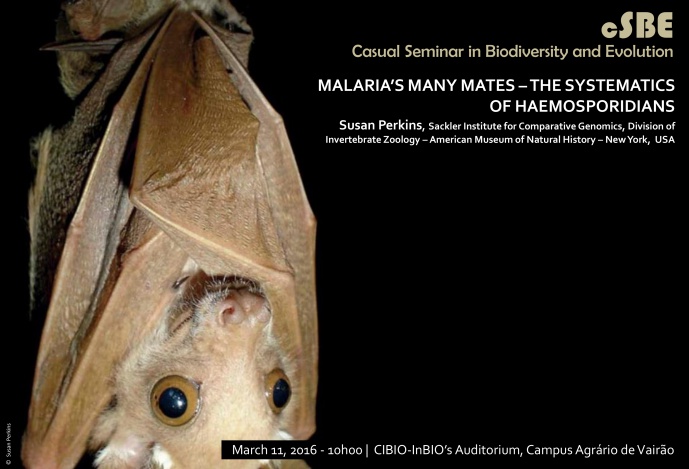MALARIA’S MANY MATES – THE SYSTEMATICS OF HAEMOSPORIDIANS

CASUAL SEMINAR IN BIODIVERSITY AND EVOLUTION

The five species of Plasmodium that cause the disease malaria in humans are part of the family Haemosporidia, which shows a large breadth of vertebrate hosts and insect vectors as well as morphologies and life histories. The classification of the parasites into genera and higher-level clades has had a tumultuous history with scores of reorganizations, splittings, and lumpings over the decades. Greater taxonomic sampling from diverse sources combined with multilocus molecular phylogenetic analyses using maximum likelihood and Bayesian algorithms have begun to shed light on the stability of various genera and their relationships to one another. I will present the latest results that include both new and re-discovered species including several recently found in turtle, bat, and ungulate hosts. These large analyses have greatly improved the stability of the phylogeny of this family. However, if we follow proper taxonomic principles, several long-standing and widely studied groups may need to be changed.
Dr. Perkins conducts research on the malaria parasites that use vertebrates other than humans, such as lizards, bats, and birds, as their hosts. She applies phylogenomics approaches to the study of the systematics and evolution of these organisms. Her lab is also interested in the interaction of these parasites with the microbiome of both the vertebrate host and the insect vector. Other research projects in the Perkins lab have included projects of the parasites that cause Chagas Disease, population genetics of canine heartworm, and genomics of encephalitis viruses. She received in Bachelor of Arts degree in Biology from the State University of New York at Potsdam in 1993 and her Ph.D. from the University of Vermont in 2000.
[Host: Ana Perera, Applied Phylogenetics]
Image credits: Susan Perkins